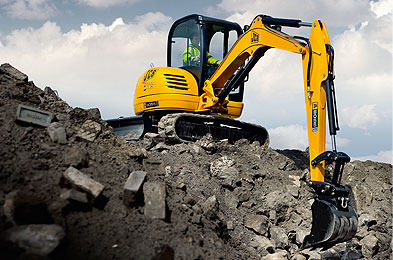
The low-skill occupations are generally made up of people who are in the demographics who are struggling. Although they are not doing as badly as beneficiaries, workers in low-skill occupations have to deal with the fact that the supply of low-skill labour is much greater than the demand for it and so wages are poor.
The wages for low-skill occupations are very poor in New Zealand. The correlation between net personal income and working as a machinery operator or driver was -0.59, and with working as a labourer it was -0.51. These are stronger correlations (only in the negative direction) than the one between net personal income and working as a manager.
Ultimately the reason for this is that working in a low-skill occupation does not take much of a personal investment in the form of an education.
The correlations between having no academic qualifications and working in a low-skill occupation were very strong: 0.85 for machinery operators and drivers and 0.82 for labourers.
Both of these fall very sharply towards the negative as academic qualifications increase. The correlation between having a Bachelor’s degree and working as a machinery operator or driver was -0.79, and the correlation between having a Bachelor’s degree and working as a labourer was -0.74.
These occupations are also the ones in which a person is most likely to be injured or to find themselves out of work for seasonal reasons or because of market fluctuations.
As a result, the correlation between working as a machinery operator or driver and being on the invalid’s benefit was 0.67, and with being on the unemployment benefit it was 0.62. The correlation between working as a labourer and being on the invalid’s benefit was 0.71, and with being on the unemployment benefit it was 0.53.
The most favoured industries for machinery operators and drivers were manufacturing (with a correlation of 0.76), transport, postal and warehousing (0.76), construction (0.48) and agriculture, forestry and fishing (0.40).
The most favoured industries for labourers were agriculture, forestry and fishing (0.77), manufacturing (0.72) and construction (0.49).
Consistent with the trend that tobacco use tends to be associated with people who have it relatively hard, the correlation between being a regular smoker and working as a machinery operator or driver was a very strong 0.82, and the correlation between being a regular smoker and working as a labourer was only slightly weaker, at 0.75.
As discussed in several other articles in this study, the immigration system favours the sort of person who is capable of paying a lot of taxes into the future, and this explicitly rules out machinery operators, drivers and labourers, because these occupations are both poorly paid and have a high risk of injury.
Consequently, the correlations between being born in New Zealand and working as a machinery operator or driver was 0.57, and with being a labourer it was 0.77.
The reason why there is a reasonably large gap between these two is because a larger proportion of Pacific Islanders work as machinery operators or drivers compared to labourers. The correlation between being a Pacific Islander and working as a machinery operator or driver was 0.31, compared to -0.19 between being a Pacific Islander and working as a labourer.
In fact, Kiwis of European descent are more likely to work as labourers than Pacific Islanders. The correlation between working as a labourer and being of European descent is 0.11. The main reason for this is probably because of all the general labour that still needs to be done on the South Island.
Being of European descent was, however, significantly negatively correlated with working as a machinery operator or driver – this was -0.31.
Maoris are heavily represented in both low-skill occupations. The correlation between being Maori and working as a machinery operator or driver was 0.66, and with being a labourer it was 0.62.
Consequently, there are relatively few Asians. The correlation between being Asian and working as a machinery operator or driver was -0.42, and with working as a labourer it was -0.67.
There was a moderately strong positive correlation of 0.53 between being a labourer and having the employment status of unpaid work in the family business. This reflects the large number of farm hands on family-run and owned farms, especially on the South Island.
*
This article is an excerpt from Understanding New Zealand, by Dan McGlashan, published by VJM Publishing in the winter of 2017.
